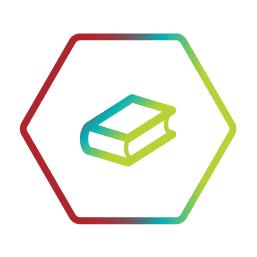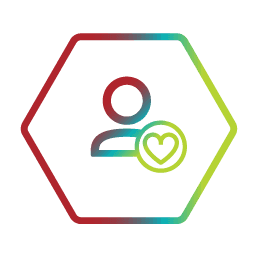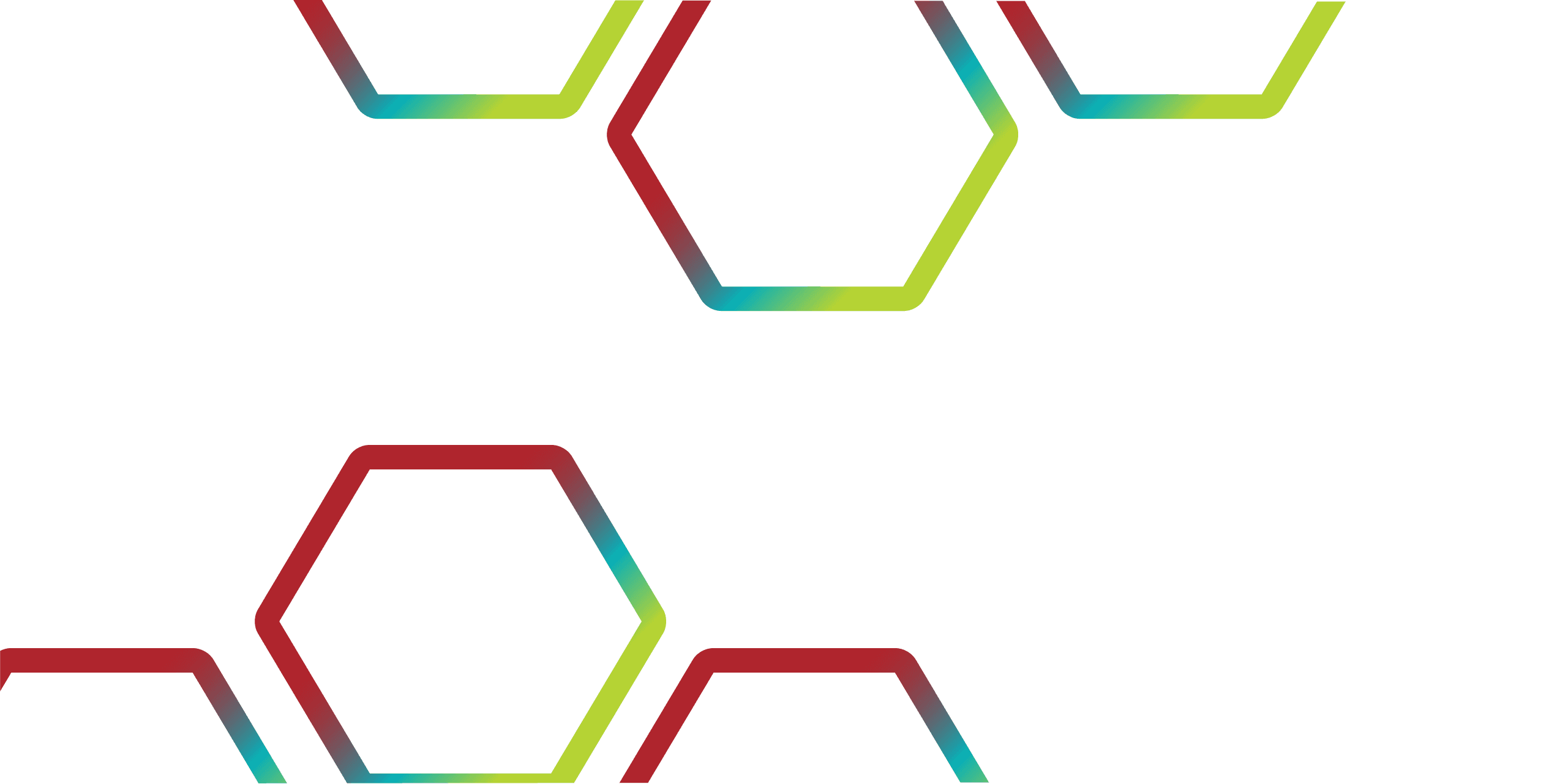
2025 CAUDIT Awards Submissions
Emerging Leader
First Name: Catherine
Last Name: Randalls
Position/Title: Governance Risk & Compliance Manager
Organisation: James Cook University
Catherine collaborated extensively across technical and non-technical teams to lay the foundations of JCU’s GRC function. With limited resources, she coordinated the efforts of a casual staff member and part-time consultant to build essential risk and governance processes. She worked closely with cybersecurity SMEs, the privacy officer, and product managers to begin the rollout of consistent risk assessment tools, including SaaS security templates and an IS Risk Register. While the Register is still being populated and refined, its introduction marks a critical shift toward structured risk visibility. Her ability to communicate governance work has increased engagement with security processes and fostered more collaborative discussions around risk.
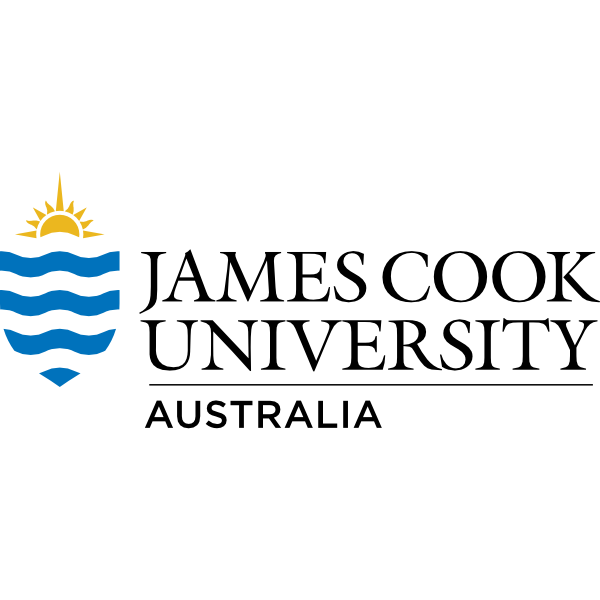
First Name: Mark
Last Name: Bassett
Position/Title: Co-Director, Academic Quality, Standards and Integrity Academic Lead (Artificial Intelligence)
Organisation: Charles Sturt University
Through decisive leadership and a commitment to collegial support, Associate Professor Mark Bassett founded and now chairs the AI Academic Working Party. The group guides colleagues with strategic advice on AI integration, governance and impact across Charles Sturt University’s academic activities and ensures initiatives meet institutional policies, sector expectations and regulatory requirements, including commitments arising from TEQSA’s Request for Information. Recognising that staff needed a single source of trustworthy guidance on GenAI, he designed and launched the GenAI Academic Portal (GAP), a secure hub that provides staff immediate access to reliable guidance, events, training and professional development on GenAI. Its flexible architecture supports real-time updates, ensuring colleagues always have current resources and stren gthening confidence and capability across the University. The GAP has been visited over 11,000 times to date. Notably, A/Prof Bassett developed a sector-leading risk framework, the S.E.C.U.R.E. GenAI Use Framework for Staff. The S.E.C.U.R.E. framework provides staff with clear, practical guidance for the responsible use of GenAI tools within defined risk parameters without requiring explicit University approval for low-risk activities. Most recently, he designed and launched the inaugural Charles Sturt AI Staff Survey and founded and leads the AI in Education Forum (an all-staff community of practice).

First Name: Lindsay
Last Name: Trebble
Position/Title: Senior Business Partner
Organisation: University of the Sunshine Coast
Lindsay Trebble is a trusted leader and visionary whose influence extends well beyond her formal remit. Known for her integrity, empathy, and clear strategic vision, she builds strong relationships, even with those outside her direct team. She is widely regarded across UniSC as a collaborative, inclusive, and strategic leader who empowers individuals and strengthens teams to succeed.
Testimonial:
' Lindsay’s leadership is defined by collaboration, inclusivity, and unwavering support. Colleagues describe her as strategic, compassionate, and a strong communicator - qualities that make teams feel valued, empowered, and heard. She leads with calm clarity, inspiring trust and lifting others up while delivering exceptional results.' Associate Director, Client Services
Key Achievements over the last year:
- Mentored 10+ cross-functional teams during the Sunny AI Assistant rollout, fostering internal capability and leadership growth.
- Ensured 100% room readiness across 60+ spaces during high-pressure Zoom-to-Teams transition, while championing business confidence and psychological safety.
- Led the business through the transition of our virtual desktop application, impacting over 2,000 users. The result: zero support calls, with Client Support praising it as a “non-event.”
- Led the migration from on-premise to cloud storage solutions, driving a 103.92% increase in cloud usage over 6 months.

First Name: John
Last Name: Toulantas
Position/Title: Manager, Data Integration and Digital Platforms
Organisation: University of the Sunshine Coast
John Toulantas demonstrates exemplary leadership through his stewardship of UniSC's two most critical digital transformation programs: the DC-to-Cloud Migration and UniNet Campus Refresh. His strategic coordination of IT and Business internal teams and multiple vendors is projected to deliver 20% infrastructure cost savings over five years, with Wave 1 migration of 500+ virtual machines to Azure already scheduled for 2025. John's people-first leadership approach is evidenced through comprehensive mentorship programs - all 15 direct reports have completed mandatory training, with 10 obtaining Azure certifications and two promoted within six months. His consolidation of four operational systems into a unified Asana platform has transformed cross-team collaboration, while his vulnerability management program successfully onboarded 700+ servers and 1,500+ network devices to Rapid7, achieving an 80% reduction in critical vulnerabilities since February 2025. Alec Sherman, Cyber Project Manager notes: 'Your pragmatic approach enables teams to deliver under pressure while feeling valued.' John maintains this balance through structured wellbeing initiatives, including regular check-ins and clear change communication frameworks that support teams through complex transitions.

First Name: Hannah
Last Name: Latham
Position/Title: Director of Digital Transformation Delivery
Organisation: Macquarie University
Hannah Latham leads a multidisciplinary division at Macquarie University, delivering strategic transformation with precision and purpose. She fosters a high-trust, high-accountability culture that empowers colleagues to lead, innovate, and collaborate across boundaries. Her remit spans two major digital transformation programs, multiple IT project delivery teams, PMO, and operational teams, each contributing to institution-wide change. Hannah’s leadership extends beyond her division; she has successfully guided cross-functional groups including legal, procurement, finance and academic stakeholders through complex digital initiatives. Her governance style is inclusive and outcomes-driven, supporting staff at all levels to grow, lead, and contribute meaningfully. She mentors emerging leaders, fosters psychological safety, and creates space for experimentation and continuous learning. Hannah’s ability to unite diverse teams around a shared purpose has been instrumental in delivering high-impact programs such as Student 360, which required navigating institutional complexity and aligning multiple business units. Her leadership consistently results in on-time delivery, strong stakeholder engagement, and enduring institutional value. She is a trusted advisor to senior executives and a role model for future leaders, demonstrating that transformation is not just about technology, but about people, purpose, and culture.
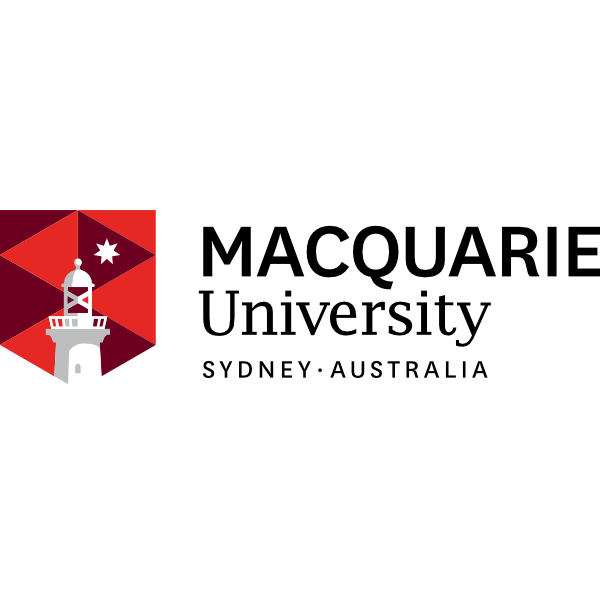
First Name: Ali
Last Name: Juma
Organisation: La Trobe University
From the first week of January 2024, Ali Juma set out to reshape how AI adoption could be meaningfully and humanely led in higher education. Personally nominated by the Chief Information Officer to lead the AI Accelerator Program, he built it into La Trobe’s signature capability initiative, positioning the university as a national exemplar in responsible AI implementation. Ali has engaged more than 15 teams across the institution through briefings, workshops, and deep listening. He designed and led the Copilot Adoption Program—delivering one-on-one sessions, role-specific prompt labs, and behavioural change pathways that enabled staff to move from awareness to embedded practice. With a 90% adoption rate and productivity gains of up to 30%, the program is now the bedrock for La Trobe’s enterprise-wide AI scale-up. He also orchestrated the inaugural CAUDIT Communities Conference at La Trobe—curating a sector-first event where the agenda championed human-centred transformation. Ali’s ability to inspire trust, enable action, and embed change at scale has made him both a catalyst within La Trobe and a connector across the sector.
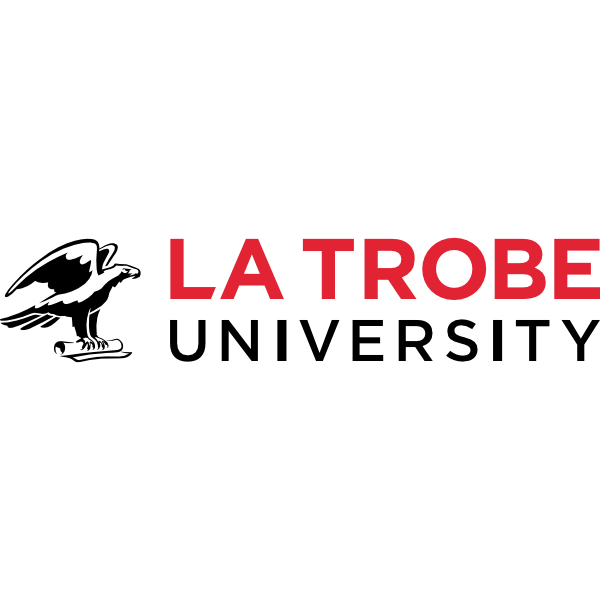
First Name: Aaron
Last Name: Evers
Position/Title: Connectivity Services Manager
Organisation: University of Canterbury
Arron has moved into a leadership role and exemplified inclusive leadership with the team that has been recruited and developed to support his practice. He has led the transformation of his area, focusing on both engagement with his customers and other teams. He goes to great lengths to understand others needs and innovatively supports delivering services to enable others.

First Name: Glenn
Last Name: Penfold
Position/Title: Associate Director, Architecture & Digital Platforms
Organisation: The University of Waikato
Since joining the University of Waikato four years ago, Glenn has been the driving force behind the institution’s digital transformation—leading teams through significant cultural and technical shifts. He spearheaded the evolution of our infrastructure, software, data, and integration functions into a modern DevOps delivery models, mentoring staff as they transitioned from legacy tools and methods to cloud-first and agile approaches built on Microsoft Azure. Recognising the strategic need to future-proof our data capabilities, Glenn led the redesign and implementation of a new cloud-based integration platform that replaced ageing on-premises systems with CI/CD-driven DevOps pipelines, eliminated manual “ClickOps,” and embedded automation and reliability into our delivery processes. Glenn’s leadership was demonstrated through technical mentoring, coaching, and upskilling—enabling our ITS teams to adopt new architectures and ways of working with confidence and ensuring they remain relevant skilled for their chosen industry. He has guided teams through complex cloud adoption journeys, dismantling legacy mindsets and fostering a culture of learning, experimentation, and continuous improvement. Through these efforts, Glenn’s teams feel empowered to operate with greater autonomy, agility, and innovation; positioning our digital platforms and people to meet the demands of a modern university ecosystem.
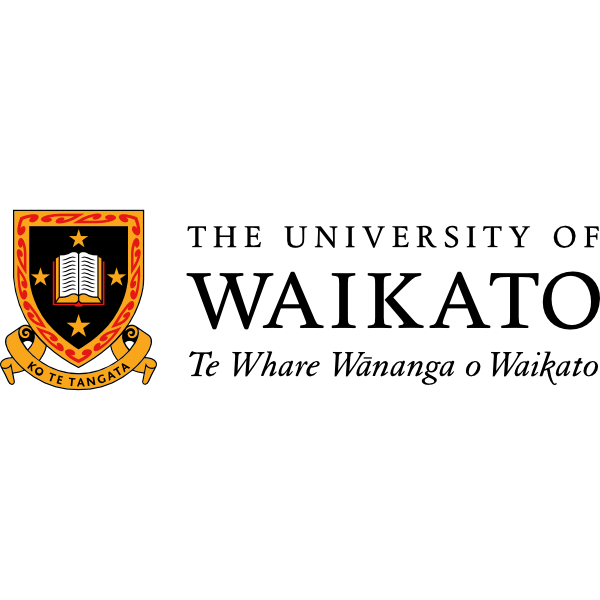
First Name: Rizwan
Last Name: Sathakkathulla
Organisation: UNSW
In my nearly six years as an Enterprise Architect at UNSW, I have led and supported colleagues across diverse research initiatives. For the Research Data Management Plan uplift, I guided cross-functional teams through improving fragmented tools and researcher engagement, providing training and streamlining data workflows to enhance compliance and usability. In the Ethics Consolidation Project, I collaborated with researchers, coordinators, and IT teams to replace manual ethics processes with an integrated, automated system, reducing administrative overhead and improving efficiency. A key leadership role has been in the Research Data Storage Platform Strategy, where I facilitated alignment between researchers, IT, and executives, translating complex architectures into clear priorities for investment and capability development. Importantly, I have contributed to the Research Computing Roadmap, defining a cloud operating model and forecasting future research demand. I supported colleagues by coordinating market research, architecture patterns, and governance frameworks, enabling sustainable platform selection and workload placement aligned with UNSW’s strategy. I actively mentor architect colleagues, share knowledge on emerging technologies, and foster collaboration across teams, empowering UNSW’s research community to adopt innovative, scalable solutions that advance research excellence.
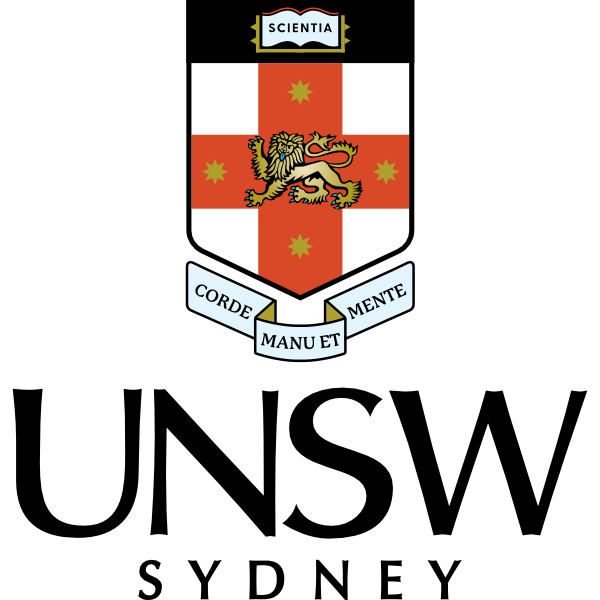
First Name: Yu-Chi
Last Name: Lee
Position/Title: Cyber Security Engineer
Organisation: University of Southern Queensland
Yu-Chi is a standout contributor in the Cyber Security team, known for her intelligence, enthusiasm, and unwavering willingness to help others. Whether tackling complex technical issues or supporting colleagues through challenges, Yu-Chi brings a sense of calm and clarity. Her ability to lead through action—especially in high-pressure situations—makes her a trusted and admired team member. She is always willing to support academic colleagues and always patiently explains complex topics to them while never making them feel stupid for not knowing something security related. Yu-Chi also seizes those moments as a gentle learning opportunity, which improves cyber secuirty posture around the uni.
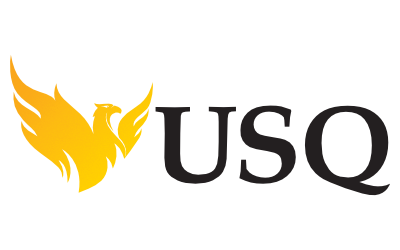
First Name: Jonathon
Last Name: Fowler
Position/Title: Solution Architect
Organisation: University of Southern Queensland
Jonathon is known for his relentless pursuit of improvement within UniSQ’s ICT infrastructure team. He frequently takes initiative to explore how existing systems like our LMS Moodle can be better leveraged to meet evolving needs. His leadership is quiet but impactful. He supports colleagues by offering practical solutions, troubleshooting collaboratively, and ensuring that technical decisions are grounded in usability. His presence in the team is a stabilising force, and his contributions often go beyond his formal responsibilities. He works closely with our academic cohort on bespoke L&T technology which was being utilised for the delivery of courses, helping our academic colleagues to streamline the development process, identify shortfalls and assist in future development steps. This is just one example of numerous ways Jonathon supports his colleagues.

Nisrin consistently demonstrates initiative and leadership by stepping into complex situations, taking charge, and guiding teams toward the best outcomes. Her proactive approach is matched by a deep commitment to collaboration. She works across large, organisational units such as the Students Portfolio and Academic Division, ensuring that diverse perspectives are heard and integrated. Nisrin’s ability to follow through on tasks and support colleagues has made her a dependable and respected figure within ICT Operations.

First Name: Sam
Last Name: Johnson
Position/Title: Client Computing Platform Manager
Organisation: University of Technology Sydney
Sam consistently demonstrates inclusive, empathetic leadership that builds trust and empowers others. Throughout the major IT Operating Model change in 2024, he provided extensive support to his team—hosting workshops, facilitating briefings, and ensuring all voices were heard in formal consultation. He personally supported individuals navigating change, including those experiencing challenging personal circumstances, always acting with discretion and compassion. Sam’s leadership planning sessions fostered team cohesion and forward planning. He leads by example, attending retrospectives and listening actively to staff concerns, often stepping in with practical help or guidance. His hands-on support during high-stress times, such as handovers from long-serving staff or sudden team member absences, has earned deep respect and loyalty. Staff consistently describe him as approachable, available, and deeply committed to their success.

First Name: Michelle
Last Name: Davey
Position/Title: Head of Education Solutions, Student, Academic and Research Solutions (StARS)
Organisation: UNSW
Michelle is widely recognised across UNSW as a well-respected leader who excels at all aspects of her leadership role. Her calm demeanour and confident thought-leadership has helped her colleagues and team collectively navigate many complex scenarios with competing stakeholder needs. Michelle operates across a large and diverse technology and stakeholder landscape delivering and supporting education and student wellbeing solutions. She works directly with the UNSW Pro-Vice Chancellor, Education (PVC-E) Division to broker better technology solutions and outcomes for each of the UNSW faculties to achieve their education technology (Ed-Tech) objectives. She leads a team of 17, providing very visible, transparent and proactive leadership in the form of clarity of role and clear messaging, uplifting her team’s processes and standards, coaching her direct reports, providing team bonding opportunities; as well as providing opportunities for them to participate in innovation, developmental and stretch activities. The healthy, collaborative and supportive team culture she has cultivated is evidence of her excellent leadership as is the frequent praise she receives from peers and colleagues within and outside of IT.

Excellence in Research Support
Jan Hettenhausen from the Griffith University eResearch team has developed an innovative desktop GIS application to support emergency decision-making during tropical cyclone events in coastal Queensland. This work forms part of the broader SurgeImpact project, which involves cyclone and storm surge scenario modelling by researchers and collaborators including QFES, GA, BoM, DES, LGAQ, and IAG. While the research partners produced thousands of detailed hydrodynamic cyclone and storm surge scenarios, our team's contribution was to build the flood modelling engine and user-friendly application that translates this data into actionable insights. The application enables users to interactively select storm parameters, landfall regions, and bounding boxes directly via a built-in map interface. It then aggregates all applicable storm scenarios to generate a conservative worst-case flood map using a computationally efficient bathtub model. This enables rapid, localised flood prediction in advance of a cyclone making landfall. Critically, the application is designed to run offline on commodity laptops using a local database of storm scenarios, thanks to extensive code optimisation that enables the flood model to execute quickly and efficiently. This makes it accessible to emergency response teams without requiring network or cloud infrastructure. The ability to visualise and analyse high-impact flooding events quickly and autonomously represents a major step forward in operational readiness. This functionality is currently not available in existing emergency response workflows, and early feedback from trial users highlights its potential to transform cyclone preparedness in Queensland and beyond.
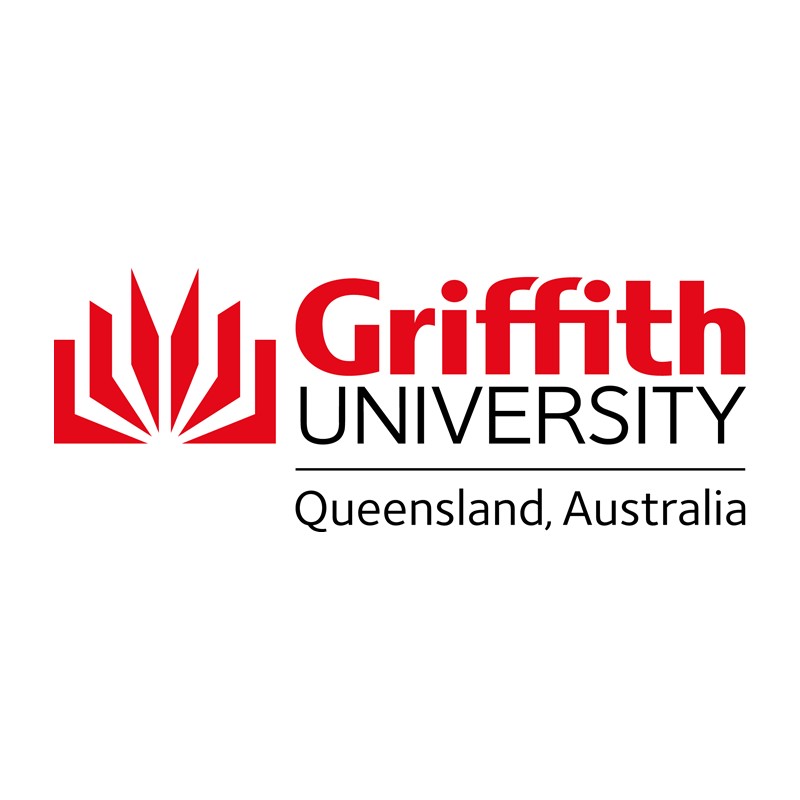
The program delivered IT services & support within UNSW’s new Medicine & Health research facility, the Integrated Acute Services Building (IASB), which is embedded within the Prince of Wales Hospital in Randwick. The IASB brings together UNSW researchers and NSW Health clinicians in a shared facility, enabling real-time collaboration to deliver patient outcomes. UNSW IT and UNSW Health Precincts teams provide critical on-site support, including Lab, AV, and IT services, supporting a shared infrastructure environment with integration across University & Health systems. The scope of UNSW IT’s support includes specialist lab & teaching environments within the Health Engineering and Biospeciman (BioBank) disciplines and spans 5,000m² across ten floors, with 100+ UNSW researchers working on healthcare innovations to deliver societal impact by bridging unmet health needs with medical technology solutions. The target audience for UNSW IT’s support services includes UNSW Faculty of Medicine & Health’s academics.

The inaugural Summer of Indigenous Peoples in Genomics (SING) Micronesia was delivered in Guam in late July 2024 as part of a NZ Marsden project co-led by Professor Matisoo-Smith and Dr. Anna Gosling. A collaboration between the University of Otago (UoO) and the University of Guam (UoG), a section of this event was to upskill indigenous researchers and community members in genomics computational skills. Resources and environments at remote sites can vary but using the research compute systems available at the University of Otago, a training environment was built with minimal barriers to entry using the OnDemand HPC portal. Running the workshop remotely ensured a high performing, consistent experience for all participants that had been fully tested and validated ahead of time.

Fully automated system to evaluate and merge research publication source information in research system. Combines data from manual, harvested, and migrated sources to create a ‘clean’ master record for each publication. Handles varied structured and unstructured data, uses advanced matching techniques such as n-gram matching, and completes missing metadata across sources. Includes comprehensive end-user logging, control, and management. The solution will process approximately 100,000 publications in the first year of operation, saving around 5,000 hours of researcher and academic effort in that time.
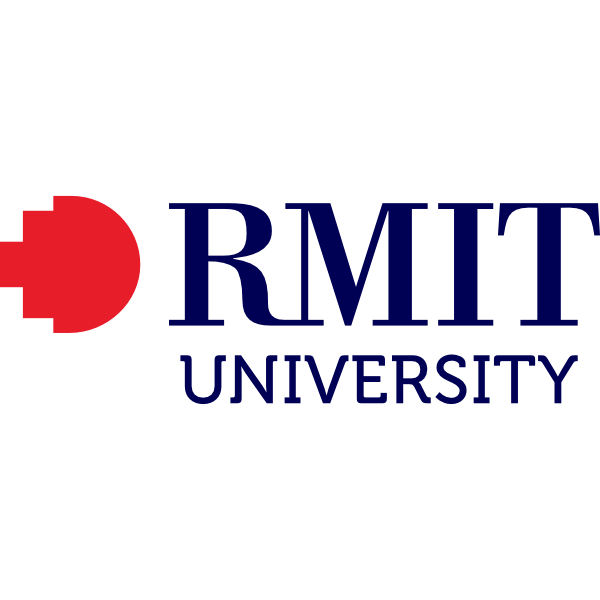
To support innovation and reduce delays for researchers and HDR students, the University implemented a self-service infrastructure for agile access to high-performance compute, GPU, and storage resources. Previously, provisioning required manual IT intervention, often taking 1-2 weeks. Now, using Nutanix Hyperconverged infrastructure and self-service tools, workloads can be ready in hours. This empowers researchers to experiment with new tools and methodologies without administrative bottlenecks, fostering faster innovation. Automated workload blueprints ensure compliance with cybersecurity standards and eliminate manual errors. Unlike expensive cloud-based models, this hybrid solution leverages existing on-premise infrastructure to deliver a cost-effective, scalable alternative that supports sensitive data and ethical research requirements. The platform is now ready for rollout, with strong demand anticipated based on feedback from cloud strategy workshops. By embedding operational and security controls into the automation process, the University ensures consistent, repeatable outcomes aligned with researcher needs, especially for fields like cybersecurity and artificial intelligence.

The Research Management System (RMS) Replacement project was part of a broader University wide initiative to replace the aging and highly customised on-premise Oracle Enterprise Resource Planning platform with 2 new cloud-based systems from Cayuse and Workday. As a global leading research institution, the University of Melbourne receives around $700million annually in research funding from Australian and international funders, private and public sectors. This implementation was undertaken against the backdrop of a concurrent ERP implementation; diverse research needs across 9 faculties; operational requirements for scalability and proposed changes to government legislation that would affect international student enrolments. With the researcher and research support staff experience at the heart of the initiative, the University streamlined, standardised and improved the research grant application process supplemented with a modern ‘Software as a Service’ system. The RMS was one of the largest transformational initiatives to impact the research community and was successfully rolled out to more than 10,000 researchers and research support staff. The program has helped provide a single source of truth for grant applications, significantly improve the user experience, delivered operational efficiencies and introduced a scalable solution that supports future growth whilst driving consistency and collaboration across the University.
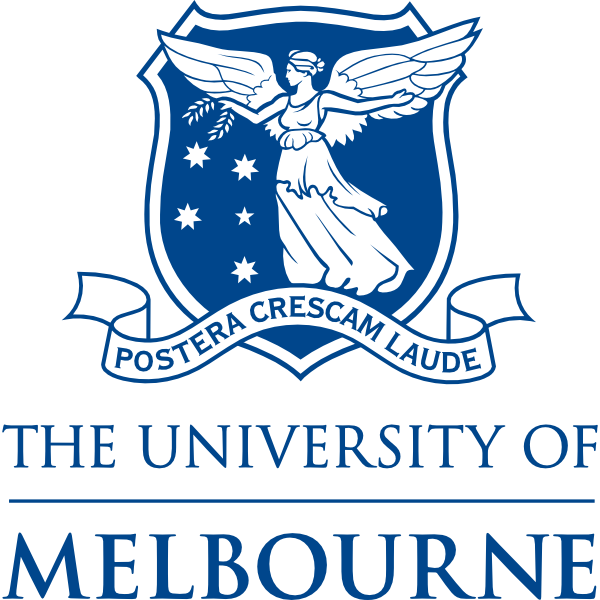
The Research Technology Services (ResTech) Compute team manages UNSW’s HPC use on the National Computing Infrastructure, dynamically reallocating resources to match research needs. For 28 consecutive quarters, they’ve achieved 100% utilisation, unlocking over $2.5M in computing value above our targets. This sustained performance maximises the university’s HPC investment and ensures researchers can access critical compute capacity when it matters most.

Enhancing the Student Experience
The Student 360 Foundation (S360F) Project is a university-wide transformation initiative at Macquarie University, designed to enhance student experience through integrated service delivery. Targeting all students and involving over 300 staff across faculties and central units, the project introduced a unified CRM platform to streamline support, improve responsiveness, and enable a 360-degree view of each student’s journey. Through co-design, agile development, and extensive training, S360F fostered collaboration and empowered staff to deliver proactive, data-informed services. The initiative supports students in navigating university systems with ease, promoting digital literacy, self-reliance, and readiness for life beyond study.

Virtual Peer is a scalable, AI-powered academic support tool co-developed by ITS, MQIT, and academic staff to enhance student learning and reduce staff workload. Built on GPT-4o with retrieval-augmented generation (RAG), it delivers context-aware, pedagogically sound responses using educator-approved content. The initiative targets undergraduate and postgraduate students across Macquarie University, with expansion planned to 25 units and 15,000 students in Semester 2, 2025. It also supports teaching staff by streamlining communication and enabling more time for high-impact teaching. Virtual Peer fosters independent learning, improves academic outcomes, and models ethical AI integration in education.

In 2024, we launched an exciting new way for students to access Monash University information, tools and services. Previously, students used a white-labelled, third-party legacy application, which acted as a link directory to access information across Monash’s websites. Although this application served us well for almost 10 years, it was no longer fit for purpose: it required vendor support to update, had limited expansion capabilities, and the user interface was outdated, inflexible and didn’t comply with accessibility and inclusiveness guidelines. In short, we needed something new to meet students’ expectations now and into the future. To move forward, we decommissioned the legacy system and brought development in-house, building a modern student portal from the ground up. Despite 85,000+ impacted students, only 19 service tickets were raised on the day following the decommission – a testament to the careful planning, student engagement, and consultation involved in creating our new portal.

MyPlan is UNSW's progression checking and study planning tool, for students to self-serve how they're progressing in their course and tailor their study plan. It's replaced manual progression checks to reduce administrative burden and the time required to resolve student progression-related queries, saving significant amounts of time so that academic staff can redirect their efforts to student-focused support. It also empowers students to take ownership of their academic journey, by equipping them with the tools and confidence to make informed decisions and engage proactively with their study plans. Its target audience is primarily to students, as well as academic, teaching and administrative staff. The scope incorporated records and systems for all students, teaching staff, administrative staff, accurate modelling of academic r ules and core technology functions including Cybersecurity, identity management, Enterprise Architects, Analysts, Developers, testing teams.

The Immersive Futures Studio (IFS) emerged from a strong desire and the need for a shared, supported environment to test emerging technologies that deliver quality education and enhanced student experience. To achieve this goal, a Multimedia Audio Visual & Immersive (MAVI) team was developed in partnership with teams from UNSW's Estate Management, Learning Environments, and vendor partners in specialist virtual reality (VR); developed the IFS as a cross-functional, inclusive testing space. By creating industry-leading digital teaching spaces, it fulfills our ed-tech strategy with cutting-edge and AI-enabled learning across all education delivery modes. It empowers students and staff to shape the future of education by giving them tools, time, and an ability to experiment.

The Student Experience Excellence (SEE) Program at Victoria University is a cross-departmental initiative aimed at transforming the student application and enrolment journey for both Higher Education and TAFE. Targeting prospective and current students, the program unified systems and processes across Student Administration, Digital and Campus Services, and Marketing. It introduced over 120 digital enhancements, streamlined communications, and reduced application-to-offer time from 26 to 4 days. The SEE Program not only improved enrolment conversion and operational efficiency but also fostered a collaborative, student-first culture, laying the foundation for the broader OneVU Student Program in 2025.

This initiative scaled Tuihono UC | UC Online’s simplified enrolment process to support the government-funded Better Start Literacy Approach (BSLA), a national programme training teachers in structured literacy. Originally built for small-cohort short courses, the system was rapidly adapted to enrol over 2,000 educators per intake—many re-engaging with university study after time away. The initiative streamlined enrolment by removing barriers such as complex identity validation and payment steps, while still meeting compliance standards. It required deep collaboration across Student Management, Finance, Enrolment Support, and the BSLA team, with clear roles and shared tools enabling agile delivery. For busy teachers, the seamless experience made professional development more accessible and less intimidating. For UC, it demonstrated how learner-first design can drive both reach and impact. This enrolment model now serves as a template for other scalable, short-form learning initiatives across the university.

This project created a nationally accessible eLearning platform to address curricula and professional practice gaps concerning cultural intelligence and First Nations science in Australia. The platform is designed for students and staff at Higher Education institutions throughout Australia. Envirocare (https://aceddenvirocare.deakin.edu.au/) delivers high-quality, culturally safe, and co-designed educational resources to enriching education across Australia. It does so by providing educators and students with access to a resource that weave together learning about Indigenous ways of knowing, being, and doing while developing cultural intelligence. Envirocare fosters cultural intelligence and inclusivity by privileging Indigenous voices through stakeholder consultation, interviews and content creation. Envirocare houses online modules co-designed with First Nations peoples, to bring cultural intelligence and First Nations science into curricula through a Caring for Country lens. This offers higher education institutions a novel approach to embedding First Nations perspectives in higher education and aims to address significant learning gaps in education.

AI platform and sandbox, available to all RMIT staff and students in Australia, Vietnam, Spain, and offshore institutes. Empowers educators to create tailored education experiences using generative AI, students to learn about generative AI in a safe environment, and for professional staff to leverage generative AI in their daily work.

The project aimed to transition the university's learning management system to Brightspace, and came to incorporate a scope that included an uplift of all subject and course sites being taught at Charles Sturt. Every current and future student at Charles Sturt as well as academic and support staff were impacted by this change.
To provide students with a more consistent, easy to use, and inclusive online learning experience across their programs. Before the project, course outlines
- Lifting of course to the baseline practices
- Plugging in of UDOIT Accessibility tool
- Lifting the capability of staff.
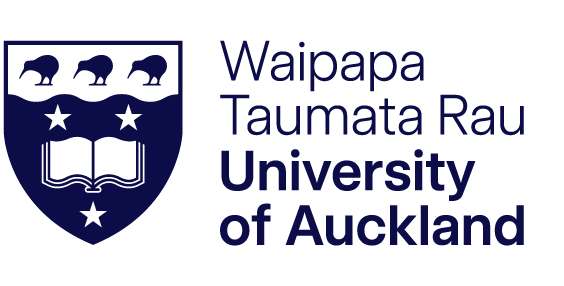
The Web and Mobile Experience Team at the University of Canterbury led a large-scale transformation of UC’s digital platforms to enhance the student experience. This initiative included migrating over 15,000 pages from an outdated on-premises CMS to a modern, cloud-hosted Adobe Experience Manager (AEM) website and designing a fully in-house student mobile app tailored to student needs. The refreshed platforms prioritise accessibility, responsive design, and seamless integration between web and mobile services. The primary audience is current and prospective students, with secondary beneficiaries including academic staff, support teams, and research centres. The project supports UC’s strategic goal of delivering an inclusive, student-centred digital environment that empowers users to access services, information, and support easily and efficiently.

Master of Business Information Technology students worked hand-in-glove with IT professional staff and Microsoft to design solutions that aim to help enhance RMIT students’ work integrated learning (WIL) experience. With the class divided into nine groups, each team was tasked with designing a WIL AI ChatBot solution to act as a virtual assistant, offering quick and accurate responses to a wide range of common student queries when searching for an internship as part of their studies. Non technical students worked with cutting edge technologies throughout the design process, and learned industry ready best-practice principles and tools sto build a secure, scalable and fit for purpose solution.

Operational Excellence
Our solution is a retrieval-augmented generative (RAG) assistant for students, staff and public that personalises answers by cohort, enforces AI governance in real time AND is a semantic search solution for our websites and knowledge bases.

Sunny, UniSC’s AI-powered digital assistant, was developed to address a clear and urgent need: to transform how staff engage with enterprise support. The goal was to create a smarter, faster, and more intuitive way for employees to access help, find information, and resolve issues without relying on traditional service desk models.
Born out of the Digital Foundations Program and shaped by feedback from the 2024 Employee Engagement Survey, the project aimed to reimagine support delivery across the university. It sought to reduce friction in everyday tasks, empower staff with self-service capabilities, and lay the groundwork for scalable, AI-driven solutions that could eventually benefit students as well.

The Hono | Human connections programme was first and foremost a business transformation, redesigning business processes and replacing aging Human Resources (HR) technology. This included the implementation of Workday ‘Human Capital Management’, Dayforce aPay and key changes to SmartRecruiters. The programme impacts every employee, contractor and Doctoral candidate at the University of Auckland

Monash University has created a way for staff to manage grading and results in just a few clicks. Previously, result management was an arduous task, requiring manual uploads and downloads of data, paper forms for result amendments (with multiple layers of sign-off) and manual report generation taking days at a time. These processes varied from faculty to faculty, and even from one staff member to another. To address this, Monash embedded an interface within their LMS that allows academics to review, validate, submit and amend final results all in one place, eliminating the need for manual data handling and providing instant reporting insights. The outcome is an end-to-end transformation of the results management process across the University, leading to improved efficiency, consistency, security and accuracy. As of November 2024, more than one million results have been submitted using the new interface, and 150,000+ results amended, without any issues.

The RIC Future Ways of Working (FWoW) initiative at Griffith University reimagined 563m² of underutilised office space as a Smart Campus pilot. Designed to support 137 professional staff from the Transformation, Industry and External Engagement, Sustainability and Marketing & Communications teams, the space was transformed into a flexible, hybrid-ready environment underpinned by smart technologies. By integrating live occupancy sensors, Video Conferencing enabled meeting Rooms and pods, a digital occupancy and feedback systems, the RIC space supports activity-based working and data-driven space optimisation. The initiative showcases a replicable, future-focused model aligned with the University’s strategic goals around innovation, digital transformation, and improved space utilisation.

Monash transitioned from legacy BI platforms to a modern enterprise Lakehouse to meet growing demands for accuracy, scalability, and advanced analytics. Launched in 2020, the initiative consolidated five data warehouses/lakes and three reporting platforms into a single, secure environment, replacing ~4,700 legacy reports with 14 enterprise dashboards featuring 40 interactive visualisations. Supporting faculties, portfolios, and business units across five countries, the Lakehouse delivers trusted, unified data for reporting, forecasting, and strategic decision-making. Built on Databricks and hosted in Microsoft Azure, it enables machine learning, AI workloads, and sustainable data practices through a unified design. A security and governance-led platform enables democratised access to enterprise data models and trusted metrics, supporting predictive modelling in key areas such as student retention and admissions. Developed in collaboration with Monash’s Cybersecurity and Infrastructure Services teams, the Lakehouse establishes new benchmarks in security, governance, and automation - setting a standard for future data initiatives.

To streamline the Dell end-user equipment procurement process, UNSW IT support transitioned from a manual, email-based quoting method with Dell to a self-service online portal-meeting 90% of their request. Previously, staff waited extended periods for quotes, which delayed raising purchase orders through CASD and forwarding them to Finance and Dell. With the new Dell Premier portal access, the support team can now generate quotes instantly, reducing turnaround times and manual effort and with the integration of DELL and UNSW fiancé system, quotes can now be submitted via the B2B online platform to get all Dell purchase orders submitted automatically to UNSW fiancé system. Scope: Covers quote generation and purchase order initiation for Dell hardware procurement within IT support services. Target Audience: UNSW IT support staff, Finance team, and other Admin and research IT members from Faculties across UNSW.

Digital and Campus Services (DCS) at Victoria University led a transformative initiative to embed operational excellence through cultural change, leadership development, and streamlined service delivery. Targeting internal staff across IT, Facilities, and broader university departments, the program unified teams, launched a single service desk, and introduced frameworks for psychological safety and inclusive leadership. It also developed the Future Leaders and Graduate Programs to build capability and succession pipelines. These efforts fostered collaboration, improved responsiveness, and laid the foundation for broader university-wide transformation, including the OneVU Student Program. The initiative serves as a scalable model for sustainable operational and cultural excellence.

The introduction of opt-in digital ID cards for students, staff and eligible affiliates has led to lasting improvements in user experience, operational efficiency, security and environmental awareness across our institution. The implementation of digital ID cards has significantly advanced operational excellence by streamlining identity management and enhancing service delivery across the University. Replacing manual, labour-intensive processes with automated, self-service options has saved 1,000+ staff hours annually and eliminated long queues and multi-week wait times for card issuance. Students and staff have embraced the convenience of self-service onboarding, with over 53,600 users opting in - demonstrating a clear shift toward digital-first behaviours. The elimination of long queues and wait times has improved perceptions of administrative services, fostering a more positive and empowered campus culture. Overall, the digital ID card rollout has not only improved access, convenience and security—it has reshaped attitudes toward technology, service delivery, and sustainability in meaningful way.

The merger of the University of South Australia (UniSA) and University of Adelaide (UofA) to establish Adelaide University (AU) is the largest of higher education institutions to have been undertaken globally. It required more than 1,000 courses to be migrated from UniSA’s Moodle Learning Management System (LMS) to the Canvas LMS AU will use. Initial scoping of this work with vendors indicated that a complex and expensive manual migration would be required. Before committing, the project team wanted to test the feasibility of an automated process. They created a simple tool which could successfully prepare Moodle courses for Canvas migration, however the long processing time made scalability questionable. Internal developers consulted about the tool were able decrease the processing time per course from hours to under a minute. Endorsed for use by stakeholders, the Moodle Processor Tool it has delivered significant reductions of project time, cost and risk.
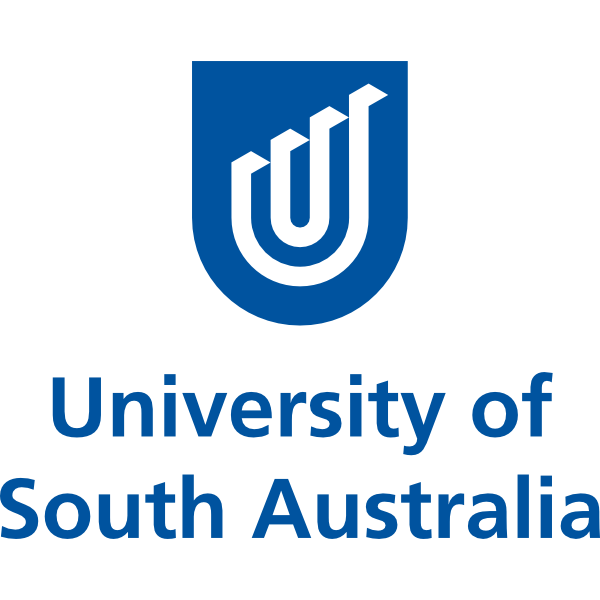
The Enterprise Search Replacement Project provided a vastly superior capability and experience across the University of Sydney campuses and research centres. The outcome is driven by AI and machine learning, refining results as usage increases. Kshitiz Bhargava’s approach, determination and ability to create a clear pathway to success resulted in staff and students having greater confidence in work outcomes at the institution. Over countless late nights and weekends, he rapidly turned around defect fixes and oversaw vendor work to ensure it met quality standards to meet an immovable deadline. The new solution – Coveo - is fully accessible, mobile-friendly, more intelligent, responsive and secure across key University websites, and meets stringent security standards that address compliance risks. Coveo will ensure a long-term sustainable solution for researchers, academics, professional staff and students, that will continually evolve as more users make use of the capability.

This project transitioned UC Online’s marketing and enrolment workflows from a standalone HubSpot platform into the University of Canterbury’s enterprise systems: Adobe Experience Manager and Dynamics 365. The project’s scope spanned the full student journey—from initial interest to confirmed enrolment—by integrating web, CRM, and application data into a single, unified system. This enabled real-time insight into learner behaviour, supported tailored communications, and significantly reduced manual processing. The audience included prospective learners engaging with UC Online’s offerings, as well as internal teams across marketing, enrolment support, digital services, and student management. The project involved deep collaboration across these functions, along with external delivery partners, to co-design scalable solutions that met both strategic goals and operational needs. By aligning enterprise architecture with learner-centred design, UCOMAP set a new model for digital transformation at UC—focusing on systems that empower users, enable cross-functional teamwork, and deliver long-term value across the institution.

Network Fusion is a multi-year project undertaken as part of the merger of University of South Australia (UniSA)and the University of Adelaide (UofA) to establish Adelaide University (AU). This is the largest merger of higher education institutions to have taken place globally. Given the scale and diversity of the UniSA and UofA network environments – and the needs and dependencies of all three institutions – all merger ICT projects have been highly complex and working to a strict delivery window. The Fusion Project is specifically responsible for:
- Merging of public facing internet between UniSA and UofA organisations
- Merging of physical firewalls and logical rules and policies between UniSA and UofA.
The Plan and Design stages of Network Fusion were undertaken by UniSA and UofA from July-December 2024, and were critical to delivering the seamless Implementation in April 2025.

The ISO/IEC 27001 Certification Project was designed to improve how UNSW manages cyber security risks, with a focus on supporting secure research collaboration. Led by Cyber Security and involving over 100 staff from research, technology, governance, and operations, the project introduced a structured, risk-based approach to information security. The scope included key research systems, and the project used existing tools and workflows to keep the approach practical and sustainable. Certification was achieved in October 2024 and has helped build trust with research partners, especially in areas involving sensitive or classified data. Regular training, clear governance, and strong engagement supported lasting changes in how teams assess risk and prepare for audits.
The project’s success has encouraged other teams to apply the same methods, and demand is growing to expand the certification to more research platforms. This work has laid a strong foundation for safe, scalable, and collaborative research at UNSW.

CQU Success is CQUniversity’s enterprise learning analytics platform, enabling proactive, data-informed student engagement and support. In 2024, key enhancements consolidated its foundation, including refined filters, updated email templates and notifications, and consistent labelling through a shared data dictionary. These improvements streamlined staff workflows and improved usability. To drive student success, adoption needed to increase, so responding to user feedback and expanding staff training helped embed CQU Success more deeply into academic practice, encouraging early intervention and tailored support. As a result, there has been a 25% uplift in units actively using the platform, reflecting stronger confidence and adoption across the university. While still evolving, the 2024 work has laid a robust foundation for future enhancements and broader use. By fostering a culture of continuous improvement and evidence-based practice, CQU Success exemplifies CQUniversity’s commitment to operational excellence in enhancing student outcomes.
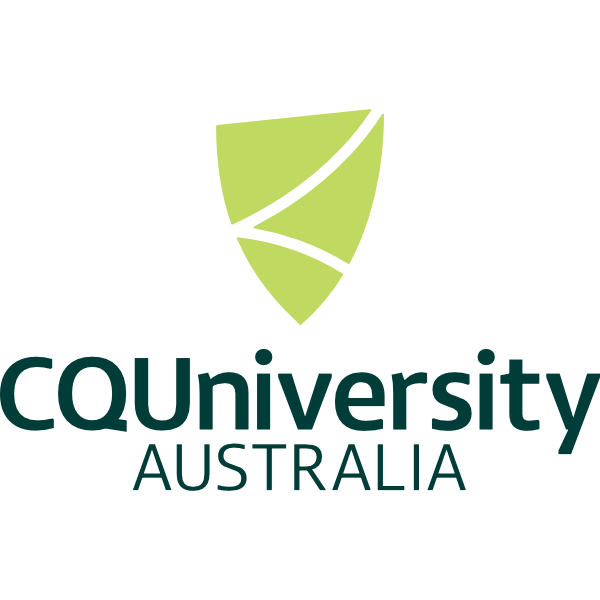
TROBY is La Trobe University’s first in-house, AI-powered smart agent, designed to support staff by delivering instant, trusted answers to high-volume institutional queries. Built entirely by the AI Accelerator team, TROBY emerged from co-design workshops with key business areas, mapping real staff questions, clarifying content ownership, and aligning with La Trobe’s Responsible AI principles. Unlike generic chatbots, TROBY reflects the university’s voice and knowledge, integrating seamlessly into Microsoft Teams for frictionless adoption. It now answers thousands of queries, reduces pressure on human support teams, and ensures staff access accurate information from verified sources. TROBY’s modular design enables rapid expansion into new domains like onboarding and policy guidance, setting a scalable model for future AI-driven work place support. Its audience spans all staff, improving efficiency, confidence, and digital capability across La Trobe while serving as a sector-leading example of responsible AI implementation.

The MS 365 Copilot Adoption Program at La Trobe University transformed AI adoption from a technical rollout into a people-first, capability-building journey. Targeting all professional and academic staff, the program combined tailored one-on-one sessions, role-specific prompt packs, and interactive labs to embed AI into daily work practices. Ali Juma led the initiative end-to-end after only one initial vendor session, designing a custom approach that encouraged curiosity, reduced fear, and localised learning for La Trobe’s unique context. Achieving a 90% uptake rate and measurable productivity gains of 10–30%, the program became the foundation for the university’s broader AI Scale Up 2025 strategy. It now serves as a model of operational excellence and sustainable change, inspiring both internal teams and the wider higher education sector.

To embed cyber awareness into the university’s culture for 30,000 staff and 55,000 students, the Cyber Security Outreach and Culture team launched the Cyber Security Champion Network. This grassroots initiative fosters open dialogue and empowers champions to act as trusted advocates and conduits for cyber information. These champions make cybersecurity approachable and relevant at the local level. Previously, cyber communications were delayed by layers of bureaucracy, often taking weeks to reach staff. Now, thanks to the network, critical updates are shared within hours, ensuring timely awareness and rapid response. This shift has improved operational efficiency and cultivated a culture of shared responsibility, where cybersecurity is no longer a technical silo but a collective value embraced across the university.

The QUT TechBar and Enterprise Desktop initiative is a strategic partnership between Queensland University of Technology (QUT) and vendor Compnow in a groundbreaking arrangement for supplying and supporting computer devices to all staff across both QUT campuses. The TechBar has vendor staffed counters where staff can pick up a new primary work device when their old one is at the end of its life or no longer performing to requirements. Where before staff computing purchasing had individual processes for each business area, poor data, large variation in models, and inconsistent customer experience, the TechBar initiative has streamlined and sped up the process and standardised the choice of models while at the same time still meeting staff needs. This change has meant improved data, fewer machines out of warranty (40% in warranty is now tracking at 75%), and fewer devices in the fleet (21k down to 16K at last count). Standardised models make it easier for support staff to set up and maintain with fewer hours of high intensity, low value work. Up to date model renewal has also meant improved security profiles and items moving more efficiently to green waste. The Tech Bar experience has been well received by staff.

Murdoch University’s Productivity & Automation Competency Centre (PACC) is transforming how the University delivers digital solutions by embedding a fusion team model that partners directly with Murdoch communities. Using Microsoft’s Power Platform, PACC empowers teams to solve operational challenges through human-centred design, low-code development, and agile delivery. Many solutions are delivered in under 8 weeks, and flagship systems like myAccess and the Student Integrity Management platform have been developed as in-house alternatives to off-the-shelf products. These provide secure, cost-effective, and fit-for-purpose outcomes. In just 18 months, PACC has delivered 14 impactful solutions across student services, governance, equity, and sustainability. The initiative serves staff and students across the University, with growing internal demand. By focusing on Minimum Usable Products (MUPs), close collaboration, and iterative refinement, PACC is driving a shift toward innovation, agility, and operational excellence. This approach is laying the foundation for long-term, sustainable digital transformation.
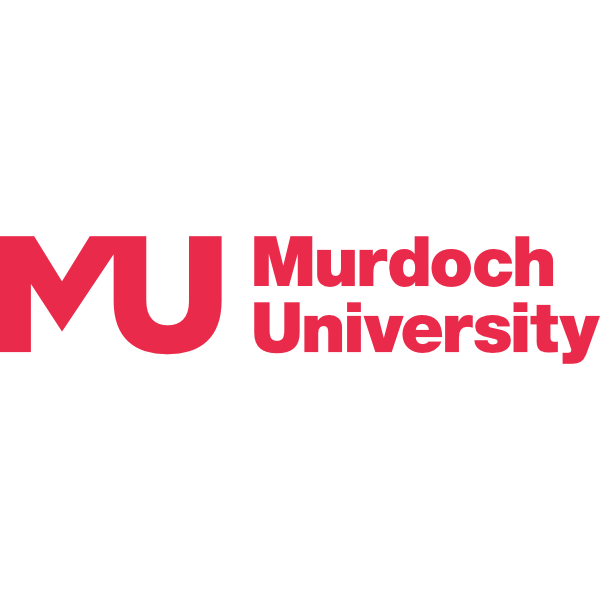
Delivering our multi-cloud environment has been transformational across the UC digital landscape. It has delivered foundational capabilities which provided a base to expand services across our broad range of users enabling a multi-cloud catalogue. We commenced with foundation capabilities including delivery of:
- Refreshed, consumable storage capability
- Modernised backup environment for cloud-based and on-premises systems
- Repeatable Azure landing zone environment with supporting operational capabilities
- Upskilling the in-house team including certifications and on-the-job learning
- Bringing our AWS environment support in-house with full-time platform engineers.
We moved to expansion of our cloud capabilities partnering with our faculty teams:
- Lift and shift migrations to Azure – retiring a large portion along the way
- Proving out and enabling AWS usage for our research community
- Implementing a private cloud high performance compute environment for our researchers
- Modernising some key platforms into Kubernetes containers
- Embedding and enriching our FinOps capabilities
- Increasing our use of IaC utilising GitHub.

The Academic Virtual Machine (AVM) service is a near-touchless, fully automated solution enabling academic staff to request, deploy, and manage virtual machines via a self-service portal. Designed for teaching and research contexts, the service integrates ServiceNow, Azure DevOps, and Azure Discovery to streamline provisioning, capture funding details, and ensure full lifecycle tracking in the CMDB. Targeting academic staff across all disciplines, the AVM service eliminates manual overhead, improves cost transparency, and enhances supportability. It empowers users with rapid access to tailored computing environments while aligning with institutional governance and operational efficiency goals.
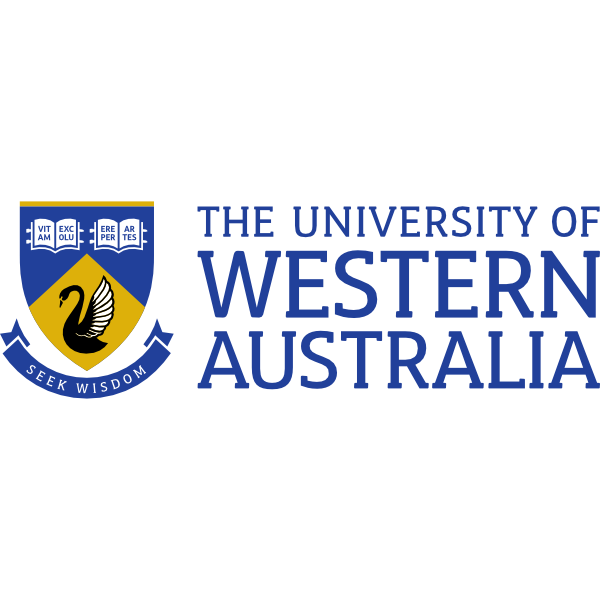
The Azure Firewall implementation involved multiple internal ICT teams and required extensive stakeholder engagement to implement a new Firewall service between all inbound and outbound traffic in the Microsoft Azure environment, delivering a significant uplift in cybersecurity capabilities and threat protection. Given the critical and sensitive nature of implementing the Firewall, careful planning was needed to ensure minimal interruption to business operations and to achieve project objectives.
Establishing the correct network design was an essential step in the project. By replacing fragmented NSG-based controls with a scalable, intelligent firewall, the solution enhances visibility, simplifies rule management, and enforces consistent security across regions and workloads. Integration with threat intelligence, TLS inspection, and automated rule deployment via Infrastructure as Code showcases modern security practices and automation maturity. Significant capabilities have been established and will be leveraged throughout 2025 to improve security controls, reduce business risk, and provide substantial cost and operational efficiencies.

In 2023, the University of Canberra endorsed its Digital Master Plan (DMP) - a bold, whole-of-university roadmap designed to deliver “Digital Together,” a transformative initiative under UC’s decadal strategy Connected. Spearheaded by the newly formed Digital Initiatives team within IT & Cyber Security, the first year of delivery in 2024 saw the successful completion of 11 impactful projects within a $6 million funding envelope. These projects enhanced teaching, research, and student experiences, while the program’s adaptive structure and transparent, democratic governance ensured strategic prioritisation and efficient resource allocation. The first year of delivery of our DMP exemplifies operational excellence through its resilient execution, sustainable investment planning, and commitment to removing barriers to access across the UC community.

In January 2024 it was necessary to establish quickly a way to better protect high profile and high risk UTS users while travelling to certain countries. The initial audience was Senior Executives (VC and University Leadership Team) and entailed determining the protective controls required, obtaining relevant devices and equipment, briefing the Senior Execs and training them in use, and standing up a 'hot line' for support while they were travelling. Rob led this initiative working seamlessly with Sam and Will to enable this for the first executive group, then following debriefings Rob, Sam and Will worked during 2024 to steadily improve this service for both the travellers and IT.
The AV Uplift Project is a strategic initiative led by the Technology Solutions Directorate to modernise James Cook University’s aging Audio-Visual (AV) Infrastructure and position the University for a digitally enhanced future. With over 200 current learning and teaching spaces across multiple campuses, the Project balances the urgent need to maintain continuity of teaching with the long-term goal of transitioning to AV technologies that support JCU’s evolving pedagogy and digital-first strategy. The Project adopts an agile, phased delivery model focused on upgrading high-impact learning, teaching, and meeting spaces. It includes the implementation of unified AV standards, platform-agnostic video conferencing capabilities, and scalable, centrally managed systems. This approach will ensure compatibility, supportability, and user experience excellence across the University, while reducing operational risk and aligning investments with JCU’s future teaching modes and strategic priorities.
RMIT’s Data Analytics Platform (DAP) initiative is a sector-leading response to the increasing need for trusted, timely, and accessible data in higher education. Designed to support academic planning, student experience, operational insight, and regulatory reporting (including TEQSA), the initiative established a modern, scalable platform underpinned by automated data pipelines and a CAUDIT-aligned conceptual data model. The initiative targeted academic leaders, professional staff, and decision-makers across the university, enabling self-service analytics, improved data quality, and evidence-based decision-making. Complementary work included the co-developed Business Terms Catalogue and a Data Literacy Program, helping uplift confidence and consistency in data use across disciplines and roles. By combining strategic alignment, sector best practice, and deep cross-functional collaboration, RMIT has delivered a sustainable foundation for future-focused, data-informed education outcomes — and a model that can guide similar transformations across the higher education sector.


Connect with CAUDIT
CAUDIT acknowledges the Traditional Owners of the lands where we live, learn and work. We pay our respects to Elders past and present and celebrate the stories, culture and traditions of all First Nations people.

